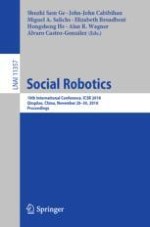2018 | OriginalPaper | Buchkapitel
The Effects of Driving Agent Gaze Following Behaviors on Human-Autonomous Car Interaction
verfasst von : Nihan Karatas, Shintaro Tamura, Momoko Fushiki, Michio Okada
Erschienen in: Social Robotics
Aktivieren Sie unsere intelligente Suche, um passende Fachinhalte oder Patente zu finden.
Wählen Sie Textabschnitte aus um mit Künstlicher Intelligenz passenden Patente zu finden. powered by
Markieren Sie Textabschnitte, um KI-gestützt weitere passende Inhalte zu finden. powered by
